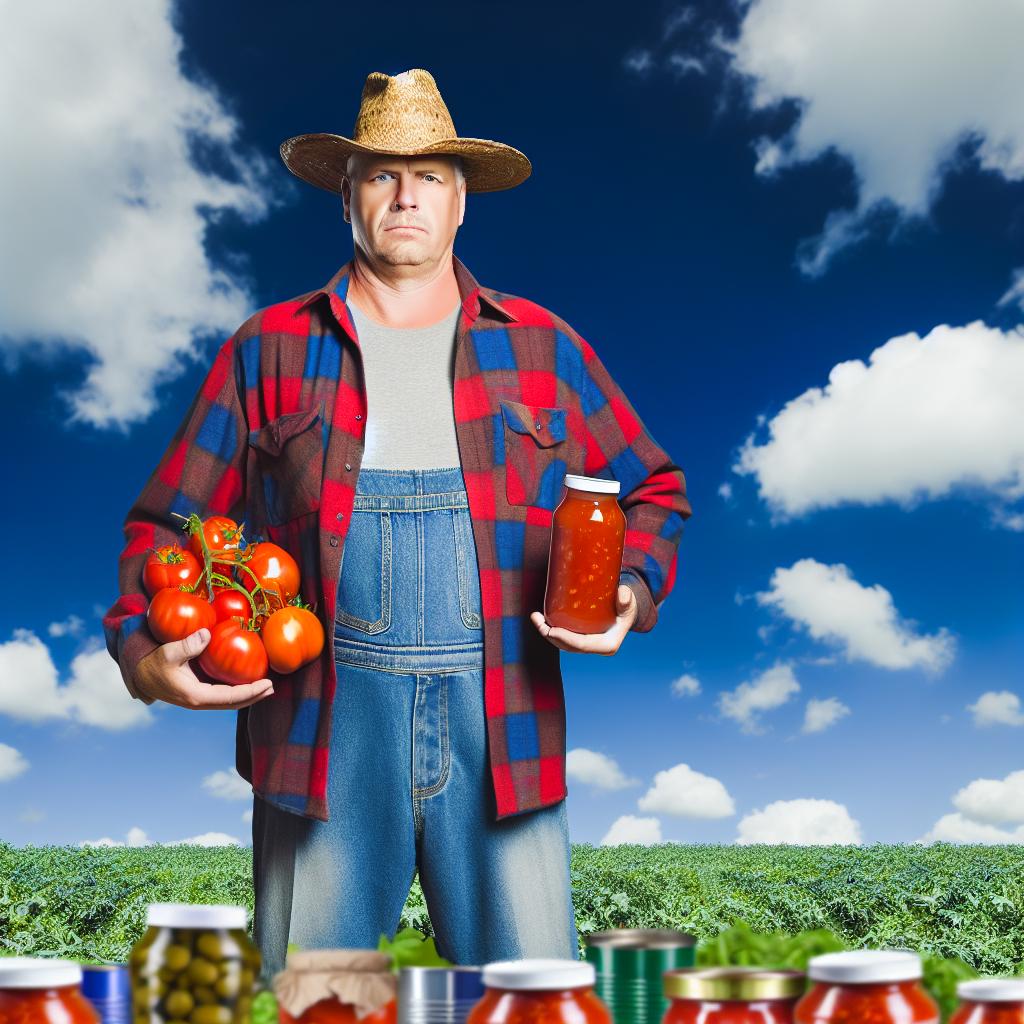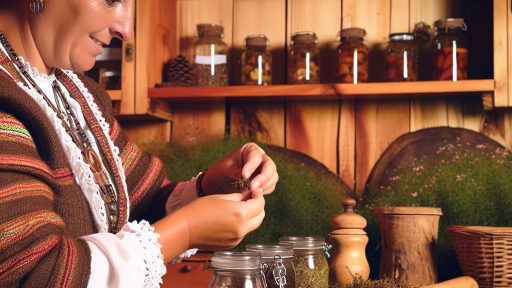Introduction to Surplus Produce and Its Challenges
Surplus produce presents a significant challenge for farmers.
Many crops exceed market demand, leading to waste.
This waste affects both economic and environmental aspects.
Farmers often lack outlets for their excess goods.
Furthermore, distribution issues complicate matters.
The timing of harvests can also lead to surplus.
In addition, consumer preferences change rapidly.
This unpredictability makes planning difficult for producers.
Consequently, farms need innovative strategies to manage surplus.
Transforming surplus into value-added products is one solution.
This approach offers numerous benefits for farmers.
Firstly, it helps minimize waste on the farm.
Secondly, it can lead to increased revenue opportunities.
Moreover, it enhances sustainability across agricultural practices.
Converting surplus allows farmers to utilize their resources efficiently.
Transform Your Agribusiness
Unlock your farm's potential with expert advice tailored to your needs. Get actionable steps that drive real results.
Get StartedAs a result, more crops reach consumers in usable forms.
By addressing these challenges, farmers can maximize their efforts.
Ultimately, smart resource management leads to a thriving farm economy.
Identifying Surplus: How Farmers Can Assess Excess Produce
Understanding Surplus Produce
Surplus produce refers to the crops exceeding the market demand.
Farmers often face this issue due to various factors.
Weather conditions can lead to unexpected harvest sizes.
Similarly, market fluctuations can alter demand patterns.
Evaluating Crop Yields
Farmers should regularly assess their crop yields.
Documenting production helps identify consistent surplus trends.
Utilizing data analytics tools can enhance yield evaluation.
Farmers can track performance over multiple seasons.
Market Research
Conducting market research is crucial for assessing demand.
Farmers should analyze current market trends regularly.
Understanding consumer preferences helps in strategic planning.
Surveys can provide insights into local buyer needs.
Engaging Local Support Networks
Connecting with local agricultural extension services is beneficial.
These organizations often provide valuable resources and advice.
Networking with other farmers can also yield useful insights.
Sharing experiences can help identify common surplus issues.
Utilizing Technology
Adopting technology can streamline surplus assessment.
Mobile apps can assist in tracking inventory levels.
Drones can provide aerial views of crop health and quantity.
Setting Up Monitoring Systems
Implementing monitoring systems aids in ongoing evaluation.
Farmers can install sensors to gather real-time data.
Showcase Your Farming Business
Publish your professional farming services profile on our blog for a one-time fee of $200 and reach a dedicated audience of farmers and agribusiness owners.
Publish Your ProfileThis information allows for timely decisions regarding surplus management.
Identifying Types of Surplus Produce
Not all surplus is created equal; categorize it wisely.
Growers can classify surplus by type, quality, or marketability.
Understanding these categories can guide value-add strategies.
Exploring Value-Added Products
Definition of Value-Added Products
Value-added products enhance the worth of raw agricultural commodities.
These products undergo a transformation in the production process.
For instance, turning fresh tomatoes into canned sauces increases their value.
Farmers can diversify their income by producing these items.
Types of Value-Added Products
Several categories of value-added products exist in the agricultural sector.
Common types include processed foods, beverages, and cosmetics.
Additionally, organic and specialty items are gaining popularity.
Processed Foods
Processed foods are perhaps the most recognized value-added products.
Examples include jams, pickles, and frozen vegetables.
These items often provide convenience for consumers.
Furthermore, they allow farmers to use surplus produce effectively.
Beverages
Beverages also represent a strong avenue for creating value.
Farmers can produce juices, wines, and herbal teas.
For instance, berry farmers can create artisanal fruit wines.
This diversification can significantly boost farm profitability.
Cosmetics and Personal Care
Some farmers are venturing into the beauty industry.
They transform herbs and flowers into essential oils and creams.
Lavender farms, for example, can create soothing lotions.
This innovation taps into the growing demand for natural products.
Examples of Successful Value-Added Products
Many farmers have successfully implemented value-added strategies.
The following examples highlight their achievements.
Peach Orchard Conversions
A local peach orchard recently began producing peach salsa.
This venture increased their sales during peak season.
Moreover, they introduced frozen peach slices for winter use.
Farmers’ Market Success
Participating in farmers’ markets can enhance product visibility.
A nearby farm sells handmade jams and jellies at local events.
This direct-to-consumer approach fosters community connections.
Dairy Innovation
Some dairy farmers are making artisanal cheeses.
These cheeses often command higher prices at local shops.
Furthermore, they promote local, sustainable farming practices.
Benefits of Creating Value-Added Products
Embracing value-added products offers multiple benefits.
They help mitigate market risks by diversifying income sources.
Additionally, they can significantly reduce food waste.
This approach maximizes the value of surplus produce.
Moreover, value-added products often have a longer shelf life.
Farmers can better manage their inventory and sales.
Showcase Your Farming Business
Publish your professional farming services profile on our blog for a one-time fee of $200 and reach a dedicated audience of farmers and agribusiness owners.
Publish Your ProfileGain More Insights: Organic Dairy Farming Practices for Sustainable Milk Production
The Process of Transforming Produce
Identifying Surplus Produce
Farmers should begin by assessing their harvest yields.
Identifying which produce remains unsold is crucial.
Furthermore, analyzing market trends can help determine demand.
Farmers can then prioritize which fruits or vegetables to transform.
Choosing Value-Added Products
The next step involves selecting suitable value-added products.
Options may include jams, pickles, or dried snacks.
In addition, farmers can consider juices or sauces.
Researching consumer preferences enhances product selection.
Implementing Processing Techniques
After deciding on products, farmers can adopt various processing techniques.
Using appropriate equipment ensures safety and efficiency.
For instance, sterilization is vital for canned goods.
Moreover, drying requires specialized methods to preserve flavor.
Packaging and Branding
Effective packaging plays a significant role in marketing value-added products.
Farmers should consider attractive designs and informative labels.
Branding can help differentiate products in the market.
Engaging storytelling about the farm can enhance consumer connection.
Sales and Distribution Channels
Identifying effective sales channels is essential for success.
Farmers may sell directly to consumers at farmers’ markets.
Additionally, establishing partnerships with local grocery stores can expand reach.
Online sales platforms also present new opportunities.
Feedback and Improvement
Finally, collecting feedback from customers is invaluable.
Understanding consumer preferences shapes future product development.
Regularly reviewing sales data can highlight successful items.
Continually improving products positions farmers well in the market.
Gain More Insights: Permaculture Practices for Efficient Water Conservation Methods
Market Research: Understanding Consumer Demand for Value-Added Products
Identifying Trends in Consumer Preferences
Consumers increasingly seek products with added value.
Health benefits play a crucial role in their decisions.
Additionally, convenience often guides their purchases.
Sustainable and organic options attract a growing segment of consumers.
Analyzing Target Demographics
Understanding the target demographic is essential.
Younger consumers often prefer unique flavor profiles.
Meanwhile, older generations may prioritize health benefits.
Families frequently seek convenience and cost-effectiveness.
Exploring Popular Value-Added Products
Common examples include jams, sauces, and dried fruits.
Consumers also appreciate ready-to-eat snacks.
Fermented products like pickles and kimchi are gaining popularity.
Furthermore, plant-based alternatives are on the rise.
Gathering Insights from Consumer Feedback
Surveys provide valuable insights into consumer needs.
Focus groups can highlight preferences and trends.
Showcase Your Farming Business
Publish your professional farming services profile on our blog for a one-time fee of $200 and reach a dedicated audience of farmers and agribusiness owners.
Publish Your ProfileSocial media listening helps track consumer sentiment effectively.
Real-time feedback allows for quick product adjustments.
Staying Ahead of Market Changes
Market research should be ongoing to stay relevant.
Identifying new trends early can provide a competitive advantage.
Regularly updating offerings keeps customers engaged.
Ultimately, being responsive to consumer demand drives success.
Learn More: Community-Supported Agriculture: Nurturing Biodiversity On American Farms
Cost Analysis: Evaluating the Economics of Transformation
Understanding Transformation Costs
Transformation costs encompass various factors.
They include labor, equipment, and materials.
Additionally, transportation and storage are crucial components.
Each factor contributes to the overall expense of product conversion.
Assessing Potential Revenue
Evaluating potential revenue is essential for budgeting.
Start by identifying the market value of transformed products.
Consider the demand for these value-added goods.
Higher demand often translates into increased profitability.
Identifying Break-Even Points
Determining break-even points helps manage risks.
This metric indicates the sales volume needed to cover costs.
By analyzing fixed and variable costs, farmers can plan effectively.
Regularly reassessing these figures can reveal opportunities for improvement.
Comparative Analysis of Market Trends
Staying informed about market trends is vital.
Compare local and national pricing to gauge competitiveness.
Identify emerging trends that can impact profitability.
This knowledge allows farmers to adapt their strategies accordingly.
Exploring Funding and Grants
Farmers should explore potential funding options.
Various local and federal grants support agricultural transformation.
Researching available resources can alleviate financial burdens.
Applying for grants may also provide additional capital for investment.
Risk Management Strategies
Effective risk management is crucial in transformation ventures.
Diversification of products can mitigate potential losses.
Additionally, maintaining strong supply chains reduces vulnerabilities.
Investing in insurance can also protect against unforeseen events.
Delve into the Subject: Farm-to-Restaurant Programs for Direct Produce Sales

Marketing Strategies for Value-Added Agriculture Products
Identifying Your Target Market
Understanding your target market is crucial.
Begin by conducting market research.
Use surveys to gather consumer preferences.
Analyze purchasing behaviors within your demographic.
Next, tailor your products to meet their needs.
For instance, health-conscious consumers may prefer organic options.
Additionally, identify niche markets that value unique products.
Creating a Strong Brand Identity
A compelling brand identity enhances recognition.
Showcase Your Farming Business
Publish your professional farming services profile on our blog for a one-time fee of $200 and reach a dedicated audience of farmers and agribusiness owners.
Publish Your ProfileStart with a memorable logo that reflects your values.
Use consistent color schemes across all platforms.
Moreover, develop a unique selling proposition.
This differentiates your products from competitors.
Focus on storytelling to connect with your audience emotionally.
Leveraging Digital Marketing
Utilize social media to engage with your audience.
Share behind-the-scenes content to showcase your farming practices.
Regularly post updates about new products and promotions.
Furthermore, consider starting a blog to educate consumers.
This can establish your authority in the industry.
Also, email marketing can be effective for direct communication.
Participating in Local Markets
Local farmers’ markets provide excellent exposure.
Set up a booth and engage directly with consumers.
Offer samples to encourage purchases.
Moreover, participate in local food festivals.
These events allow you to showcase your products widely.
Networking with other local producers can also be beneficial.
Using Packaging to Add Value
Effective packaging can significantly enhance products.
Choose eco-friendly materials that appeal to environmentally aware consumers.
Clearly communicate your product’s benefits on the packaging.
Design attractive labels that capture attention.
Consider offering multi-packs or gift sets for higher sales.
Building Collaborations and Partnerships
Collaborate with local chefs or restaurants to promote your products.
Offer them your surplus produce for menu specials.
This can create a win-win scenario for both parties.
Additionally, partner with retailers to widen your distribution.
Forming alliances with local businesses can strengthen your brand.
Explore opportunities for co-marketing initiatives.
Regulatory Considerations and Food Safety for Value-Added Products
Understanding Regulatory Requirements
Each country has specific regulations governing food production and processing.
Understanding these regulations is crucial for compliance and business success.
Farms must become familiar with local, state, and federal guidelines.
Moreover, they should consult relevant regulatory bodies for updates.
Compliance with regulations protects both producers and consumers.
Key Regulations to Consider
Food safety regulations primarily focus on production, processing, and labeling.
The Food Safety Modernization Act promotes proactive safety measures.
Additionally, local health departments often have specific requirements.
Regulations inform producers about safe processing methods.
Labeling laws mandate accurate ingredient listings and nutritional information.
Implementing Food Safety Practices
Establishing a food safety plan is essential for any value-added product.
Producers should conduct regular training for staff on food safety protocols.
Showcase Your Farming Business
Publish your professional farming services profile on our blog for a one-time fee of $200 and reach a dedicated audience of farmers and agribusiness owners.
Publish Your ProfileMonitoring practices include routine sanitation and equipment checks.
Documentation of all procedures ensures traceability and accountability.
Utilizing third-party audits can help verify compliance with safety standards.
Risk Management and Contingency Planning
Identifying potential risks is critical for protecting products and consumers.
Producers should develop a response plan for contamination events.
Training staff to recognize problems ensures quick action can be taken.
Regular reviews of food safety procedures help farmers stay prepared.
Benefits of Compliance
Compliance enhances the credibility of value-added products.
It builds consumer trust and confidence in the brand.
Moreover, it opens access to new markets that value safety.
Ultimately, adherence to regulations contributes to business longevity.
Case Studies: Successful Examples of Surplus Transformation in Farming
Introduction to Surplus Transformation
Transforming surplus produce can significantly increase farm profitability.
This process involves creating value-added products from excess crops.
Farmers often overlook their surplus potential, missing out on new income streams.
Various case studies demonstrate how innovative farmers adapt to challenges and maximize resources.
The Fruit Crafter’s Jam Co.
In Georgia, The Fruit Crafter’s Jam Co. specializes in artisanal jams.
They transform surplus berries into flavorful spreads.
This allows them to utilize berries that would otherwise go unsold.
Consequently, they reduce waste while increasing overall revenue.
The company also emphasizes local sourcing, boosting community support.
Green Earth Farms
Green Earth Farms in California has a unique approach to surplus vegetables.
They create frozen meal kits from excess produce.
This solution helps address food waste and offers convenient meal options.
The kits provide nutritional value while featuring locally sourced ingredients.
As a result, their sales have significantly increased over the past few years.
Sunny Valley Dairy
Sunny Valley Dairy implements a creative method for surplus milk.
Instead of discarding their excess, they produce artisanal cheeses.
This approach allows them to diversify their product line successfully.
In addition, they enjoy a higher price point for these gourmet items.
Further, this transformation has fostered a loyal customer base.
Coastal Herbs Farm
Coastal Herbs Farm turns surplus herbs into essential oils.
This innovative transformation maximizes the value of every harvest.
Their high-quality oils attract both local and international buyers.
Moreover, they educate consumers on the uses of essential oils.
This emphasis on education adds value to their brand image.
Sharing Best Practices
Many farmers can benefit from the experiences of these case studies.
Implementing value-added processes can lead to increased profit margins.
Additionally, forming partnerships with local businesses can expand reach.
Farmers should explore various avenues for surplus transformation.
Ultimately, the goal is to turn excess yield into opportunity.
Showcase Your Farming Business
Publish your professional farming services profile on our blog for a one-time fee of $200 and reach a dedicated audience of farmers and agribusiness owners.
Publish Your ProfileFuture Trends in Value-Added Agriculture and Sustainability
Growing Consumer Demand for Sustainability
Consumers increasingly prefer sustainably-produced goods.
This trend drives farmers to explore eco-friendly practices.
Moreover, transparency in sourcing influences purchasing decisions.
Technological Innovations Enhancing Efficiency
Technology is reshaping how farmers process surplus produce.
Innovations such as precision agriculture optimize resource use.
Additionally, automation streamlines production processes.
Focus on Local Markets and Supply Chains
Farmers are turning to local markets for surplus sales.
This strategy reduces transportation costs and carbon footprints.
Furthermore, consumers appreciate supporting local economies.
Health-Conscious Consumer Trends
Health trends influence the types of value-added products.
Farmers are creating products that cater to health-conscious buyers.
Examples include organic snacks and nutrient-rich juices.
Integrating Circular Economy Principles
Circular economy concepts are gaining traction in agriculture.
This approach promotes waste reduction and resource reuse.
Farmers can transform waste into new products effectively.
Collaborations and Partnerships in Agriculture
Partnerships between farmers and food processors are growing.
Such collaborations foster innovation in value-added products.
Working together increases efficiency and market reach.




